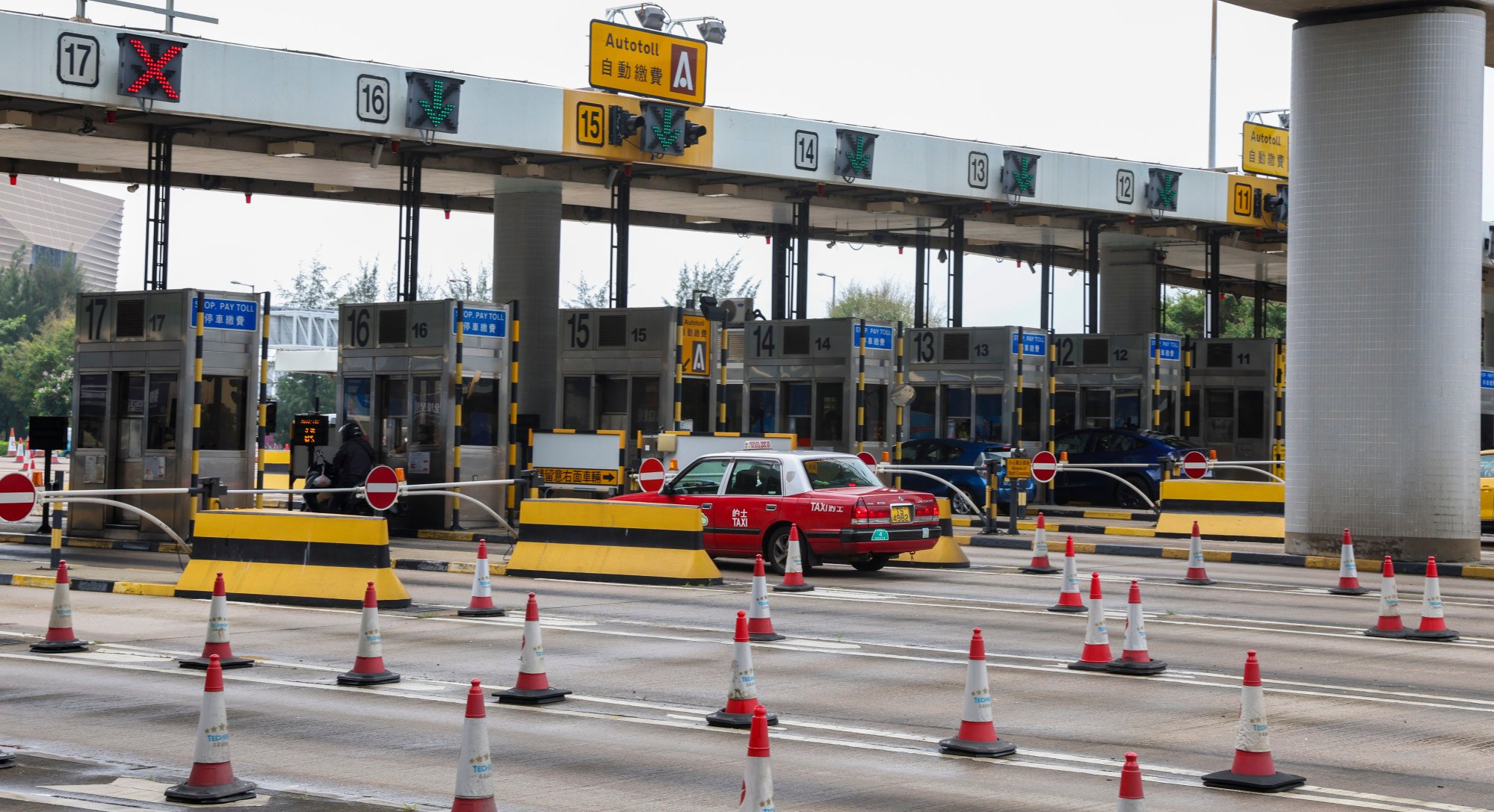
New e-tolls to save Hong Kong drivers time at several tunnels from next month, government says
- New government-run system will eventually replace manual and privately operated automatic collection booths across the city
- Lack of monthly administration fee and streamlined traffic set-up will be a win for the public, assistant transport chief Honson Yuen says
Hong Kong drivers will save time through a new electronic toll payment system that will go into operation at several government-owned tunnels starting from next month, transport authorities have said.
Assistant Commissioner for Transport Honson Yuen Hong-shing on Friday said that the electronic tolling system would be rolled out on the Tsing Sha Highway connecting Tsing Yi and Sha Tin, in February. It will launch at the Shing Mun Tunnels running between Tsuen Wan and Sha Tin, and the Lion Rock Tunnel linking Sha Tin and Kowloon Tong, the following month.
The e-toll sensors will be installed on new structures above roads, allowing for the removal of toll booths and helping to straighten traffic lanes, which should speed up the flow of cars.
“With the free-flow tolling service, cars will not need to stop or queue to pay, allowing for smoother traffic flow,” Yuen said. “There is also no need to switch lanes to reach the toll booths, reducing the chance of accidents.”

The new system, which cost HK$945 million (US$121 million) to develop, will gradually replace the existing manual and privately run automatic collection booths at tunnels as part of the government’s plan to develop smart transport.
The new initiative will operate in direct competition with privately owned Autotoll Smart Solutions, which operates automatic tolls that the Transport Department plans to phase out. In contrast to the government’s new system, the Autotoll service charges a monthly administration fee to drivers. The government would not raise tunnel fees following the investment, Yuen pledged.
Just-opened tunnel and roads in Hong Kong to be monitored for traffic problems
The department will issue a rectangular tag for each licensed vehicle free of charge. Drivers will need to attach the tag, which operates using radio frequency identification, on the inside of the windscreen.
A chip inside the tag will allow sensors to register that a vehicle has passed through the toll checkpoint. The charge is then deducted from funds in the driver’s account on the system, which can be linked to a personal bank account and topped up automatically.
Drivers who fail to install the tag and pass through the automatic toll booth will have their number plate recorded by an automatic recognition system and be reminded to pay the fee within two weeks. Drivers caught evading tolls can be issued a penalty of up to HK$350 or fined up to HK$5,000 for more serious infractions.
Traffic zips along new Hong Kong bridge, but what happens after holidays?
About 260,000 drivers who pre-registered have been receiving their tags in the mail this week. Others can register on the department’s website from Friday.
In response to why the authorities chose to invest in the tags instead of number plate recognition technology, Ho said the new solution was more reliable in Hong Kong’s congested traffic.
Ringo Lee Yiu-pui, president of the Hong Kong Automobile Association, said that he welcomed the addition to the roads in Hong Kong. The electronic tolling system, which he said was common overseas, should be introduced in the city as soon as possible because it saved time for drivers and reduced accidents when they tried to switch lanes to get to the correct toll booth.
“Cross-harbour tunnels are always jammed because drivers are slowing down and having to stop at the entrance to pay. This electronic toll system can greatly reduce congestion. Accidents also happen when tailgaters bump into the car in front of them,” he said.
Lee added that the department could ensure that the switchover was gradual to allow time for road users to adapt. He said the department should also set up more service centres to help older drivers apply for their vehicle tags as they might not be able to do so online.

